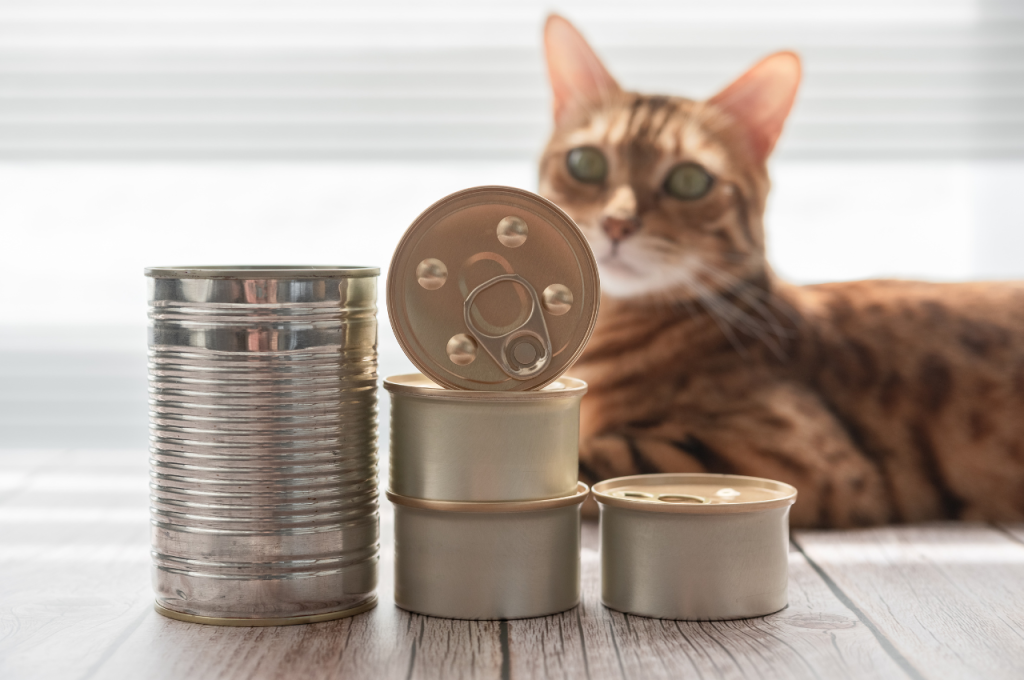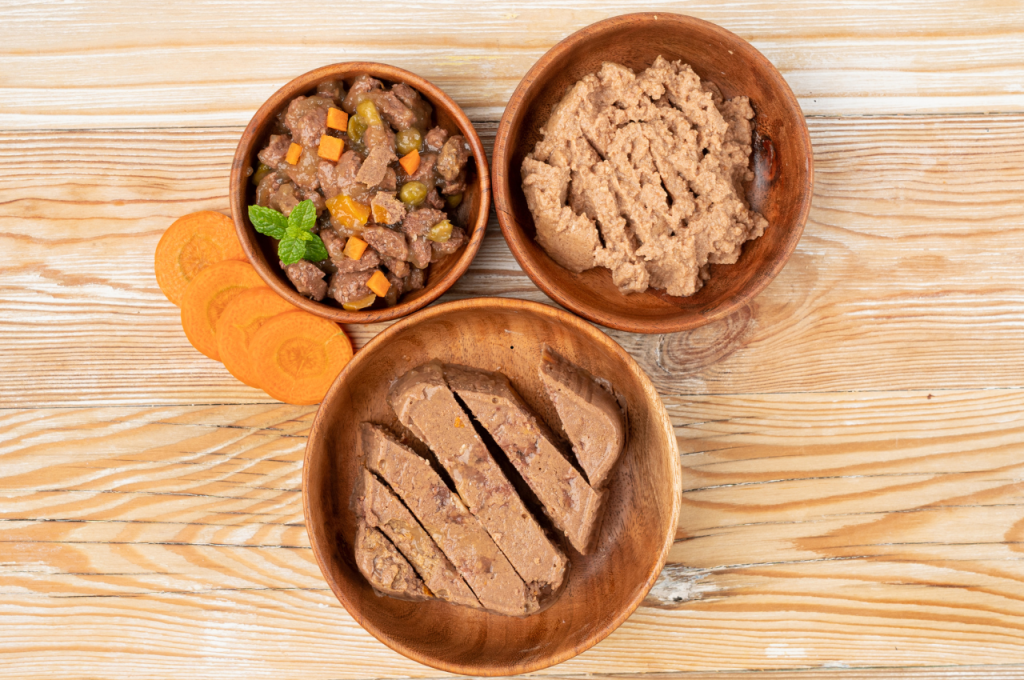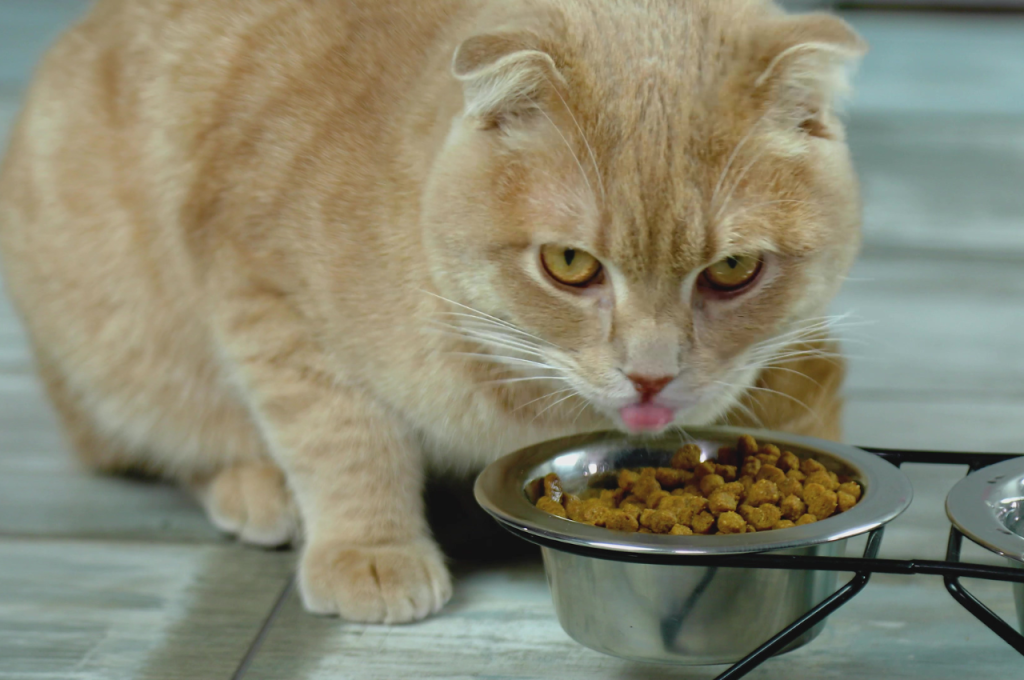To make your cat eat, you can add enticing flavors or textures to their food. There are several options to consider. Adding a bit of warm chicken broth or tuna juice can make the food more aromatic and enticing.
Mixing wet food with dry cat food can also improve texture and flavor, making it more appealing. Cat-safe human foods like cooked chicken, turkey, or fish can be added in small amounts. Another option is to sprinkle a bit of nutritional yeast over the food, which many cats find irresistible. Additionally, consider adding a small amount of pumpkin puree for fiber and taste. Always introduce new foods gradually and consult your veterinarian to ensure they are safe and suitable for your cat’s diet. These strategies can help stimulate your cat’s appetite and make mealtime more enjoyable.
Introduction to Feline Feeding Challenges
Feline feeding challenges can be frustrating for cat owners. Whether your cat is a picky eater or has specific dietary requirements, finding the right balance of nutrients and flavors can be a real struggle. In this article, we will explore common reasons cats may reject food and provide tips on assessing your cat’s specific needs to ensure they are getting the nutrition they require.

Common Reasons Cats May Reject Food
Cats may reject food due to stress, illness, or dislike of certain textures or flavors. To make your cat eat, try adding chicken broth, tuna juice, or small amounts of cooked chicken to entice their appetite.
- Change in Environment: Cats are creatures of habit and may refuse food due to changes in their environment.
- Health Issues: Dental problems, digestive issues, or underlying health conditions can affect a cat’s appetite.
- Food Preferences: Cats, like humans, have taste preferences and may reject certain flavors or textures.
- Stress and Anxiety: Cats may refuse to eat when stressed or anxious, such as during travel or when introduced to new pets.
Assessing Your Cat’s Specific Needs
- Observation: Monitor your cat’s behavior and food intake to identify any patterns or changes.
- Consult a Veterinarian: If your cat’s refusal to eat persists, seek professional advice to rule out any underlying health issues.
- Try Different Foods: Experiment with various textures and flavors to understand your cat’s food preferences.
- Consistency: Stick to a regular feeding schedule and minimize changes to your cat’s environment to reduce stress.
The Role of Texture and Temperature
When it comes to encouraging a picky cat to eat, considering the texture and temperature of their food can make a significant difference. Cats are known for being particular about what they consume, so making adjustments in these areas can often pique their interest and appetite.
Warming up Meals for Palatability
Cats tend to prefer their food at body temperature. To entice a fussy eater, warming the food slightly can enhance its aroma and make it more appealing. Simply microwaving the food for a few seconds or adding a bit of warm water can make a noticeable difference.
Texture Variations to Entice Finicky Eaters
Introducing variety in the texture of your cat’s food can help stimulate their appetite. Mixing in a small amount of canned food with dry kibble can create a more enticing texture. Alternatively, incorporating broths or gravies can also add moisture and palatability to the meal.
Enticing Aromas and Flavors
When it comes to encouraging your finicky feline to eat, introducing enticing aromas and flavors can be highly effective. Cats are natural hunters and are drawn to strong scents and savory tastes. By incorporating certain herbs, spices, and natural juices into their food, you can pique their interest and stimulate their appetite.
Herbs and Spices Safe for Cats
Some herbs and spices can be added to your cat’s food to enhance the aroma and flavor, making it more appealing to them. However, it’s crucial to ensure that the ones you choose are safe for feline consumption. Here are some cat-friendly herbs and spices:
- Catnip
- Parsley
- Basil
- Mint
- Thyme
Adding Natural Fish or Meat Juices
Natural juices from fish or meat can be a game-changer when it comes to enticing your cat to eat. These juices not only enhance the flavor of the food but also provide additional moisture, which is essential for your cat’s hydration. You can add a small amount of tuna or salmon juice to their food to make it more enticing and irresistible.
Nutritional Additives for Health and Taste
To make your cat eat, you can add nutritional additives to their food. These additives can enhance the taste of their food, making it more appealing to them. Additionally, they provide essential nutrients that can improve your cat’s health and well-being.
Adding nutritional additives to your cat’s food can be a great way to increase their appetite and provide essential nutrients for their health. Two popular additives that can enhance the flavor and nutritional value of your cat’s food are probiotics and omega fatty acids.
Probiotics for Digestive Appeal
Probiotics are live bacteria that can help improve your cat’s digestive system. They can be added to your cat’s food to help with issues like diarrhea, constipation, and vomiting. Probiotics can also increase the good bacteria in your cat’s gut, which can strengthen their immune system. Some common probiotics used in cat food include Lactobacillus acidophilus, Bifidobacterium lactis, and Enterococcus faecium.
Omega Fatty Acids for Flavor and Health
Omega fatty acids are essential nutrients that can improve your cat’s overall health and well-being. They can also enhance the flavor of your cat’s food, making it more appealing to them. Omega-3 and Omega-6 are two types of fatty acids that are commonly added to cat food. Omega-3 can help reduce inflammation, improve brain function, and boost the immune system. Omega-6 can improve the health of your cat’s skin and coat. Adding probiotics and omega fatty acids to your cat’s food can be an easy way to improve their diet and increase their appetite. Just be sure to consult with your veterinarian before adding any new supplements to your cat’s diet.
Homemade Treats as Meal Toppers
Enhance your cat’s meals with homemade treats as meal toppers. Sprinkle a small amount of cooked and shredded chicken, tuna, or salmon on top of your cat’s food to entice him to eat. You can also try adding a spoonful of plain, unsweetened yogurt or a dollop of baby food to make mealtime more appealing for your finicky feline.

Simple Recipes for Cat-friendly Toppings
To make your cat eat, try adding cat-friendly toppings like shredded cooked chicken, tuna juice, or a sprinkle of nutritional yeast. These simple recipes can enhance the flavor and texture of your cat’s food, making it more enticing.
Using Cooked Meats and Fish
To make your cat eat, you can add small amounts of cooked meats and fish to their food. Cooked chicken, turkey, or fish can enhance the flavor and texture, making the meal more appealing for your cat.
Commercial Food Enhancers
You can add commercial food enhancers like tuna juice, bonito flakes, or wet food to entice your cat to eat. These enhancers can enhance the flavor and aroma of the food, making it more appealing to your feline friend.
If your cat is a picky eater, you may be wondering how you can entice them to eat their food. One solution is to try commercial food enhancers that are specially designed to make cat food more appealing. These enhancers come in various forms, including gravies, sauces, and dry food additives. Let’s take a closer look at each of these options.
Gravies and Sauces Formulated for Cats
Gravies and sauces are a popular choice when it comes to commercial food enhancers for cats. These products are formulated specifically for feline taste buds, and they come in a variety of flavors, including chicken, salmon, and beef. Simply pour the gravy or sauce over your cat’s food, and watch them lick their bowl clean. Some popular brands of cat food gravies and sauces include Meow Mix, Fancy Feast, and Whiskas. Be sure to read the ingredients carefully to ensure that the product is made with high-quality, healthy ingredients that will benefit your cat’s health.
Dry Food Additives to Boost Interest
If your cat prefers dry food, you may want to consider adding a dry food additive to their meal. These products are designed to boost the flavor and aroma of your cat’s food, making it more enticing for them to eat. Dry food additives come in various forms, including powders, pellets, and flakes. They are made with natural ingredients such as chicken liver, fish oil, and dried kelp. Some popular brands of dry food additives for cats include Instinct, Dr. Elseys, and Purina. When using dry food additives, be sure to follow the manufacturer’s instructions carefully. Some products require you to mix the additive with water before adding it to your cat’s food, while others can be sprinkled directly onto the kibble.
In conclusion, commercial food enhancers can be a great way to entice your picky cat to eat their food. Whether you choose a gravy, sauce, or dry food additive, be sure to select a high-quality product made with healthy ingredients. Your cat will thank you for it!
The Power of Variety and Rotation
Introducing variety and rotation into your cat’s diet can encourage them to eat. Consider adding small amounts of cooked chicken, fish, or eggs to their food to entice them. Experimenting with different textures and flavors can make mealtime more appealing for your finicky feline. Adding variety and rotating your cat’s food can encourage him to eat more consistently.
Rotating Protein Sources
Cats are carnivores, so rotating protein sources can mimic their natural diet.
Mixing Wet and Dry Foods
Mixing wet and dry foods provides different textures and flavors for enhanced palatability.
Feeding Strategies and Practices
Enhance your cat’s meal appeal by incorporating tasty toppings like shredded chicken, tuna, or a sprinkle of catnip. Experiment with different textures and flavors to entice your feline friend’s appetite and make mealtime more enjoyable.
Scheduled Feeding Vs. Free Feeding
Cats may prefer scheduled feeding over free feeding to establish a routine.
- Scheduled feeding involves offering meals at specific times daily.
- Free feeding allows cats to eat whenever they want, potentially leading to overeating.
Creating a Stress-free Eating Environment
- Minimize stress during mealtimes to encourage your cat to eat.
- Choose a quiet spot away from high-traffic areas for feeding.
- Ensure fresh water is always available near the food bowl.
When to Consult a Veterinarian
If your cat is refusing to eat, it may be time to consult a veterinarian. They can provide guidance on what to add to your cat’s food to entice them to eat, ensuring they receive the necessary nutrients for their health and well-being.
Identifying Underlying Health Issues
If your cat is refusing to eat, it could be a sign of an underlying health issue. Before adding anything to your cat’s food, it’s important to identify the root cause of their loss of appetite. Some common health issues that can affect a cat’s appetite include dental problems, gastrointestinal issues, and kidney disease. Look out for symptoms such as vomiting, diarrhea, lethargy, and changes in behavior or appetite. If you suspect any health issues, it’s best to consult a veterinarian to determine the best course of action.
Professional Dietary Recommendations
If your cat is healthy but still picky about their food, it may be worth consulting with a veterinarian or a professional animal nutritionist. These experts can help you formulate a balanced and nutritious diet for your cat that can improve their appetite. They can also recommend specific supplements or additives that can encourage your cat to eat. Always consult with a professional before making any significant changes to your cat’s diet. In conclusion, while there are various options to encourage your cat to eat, it’s crucial to identify the underlying cause of their loss of appetite before taking any action. Consulting with a veterinarian or animal nutritionist can provide invaluable guidance and advice on how to help your cat’s appetite. Remember to always prioritize your cat’s health and well-being above anything else.
Patience and Persistence
Patience and persistence are key when trying to get your cat to eat. Instead of adding unfamiliar ingredients to their food, focus on gradually introducing new flavors and textures. Remember, it may take time for your cat to adjust, so be patient and persistent in finding the right combination that will entice them to eat. When encouraging your cat to eat, remember the key is patience and persistence.

Monitoring Your Cat’s Response
Keep an eye on how your cat reacts to the food additions.
Adjusting Strategies as Needed
- Try different flavors and textures.
- Gradually introduce new ingredients.
- Consult your vet for advice.
Conclusion
To conclude, finding the right additions to your cat’s food can be a game-changer in encouraging their appetite. Whether it’s adding a little bit of tuna, chicken broth, or even a sprinkle of catnip, experimenting with different flavors and textures can entice your feline friend to eat more.
Remember to consult with your veterinarian before making any changes to ensure your cat’s health and dietary needs are met.
